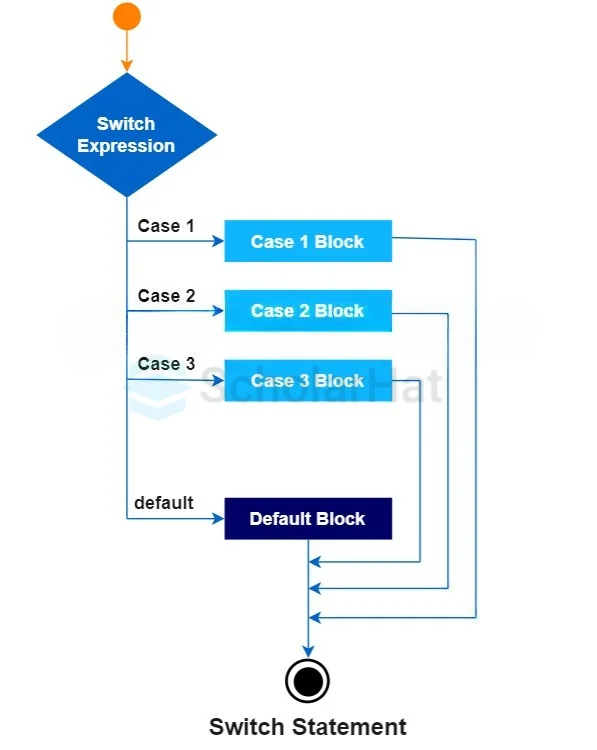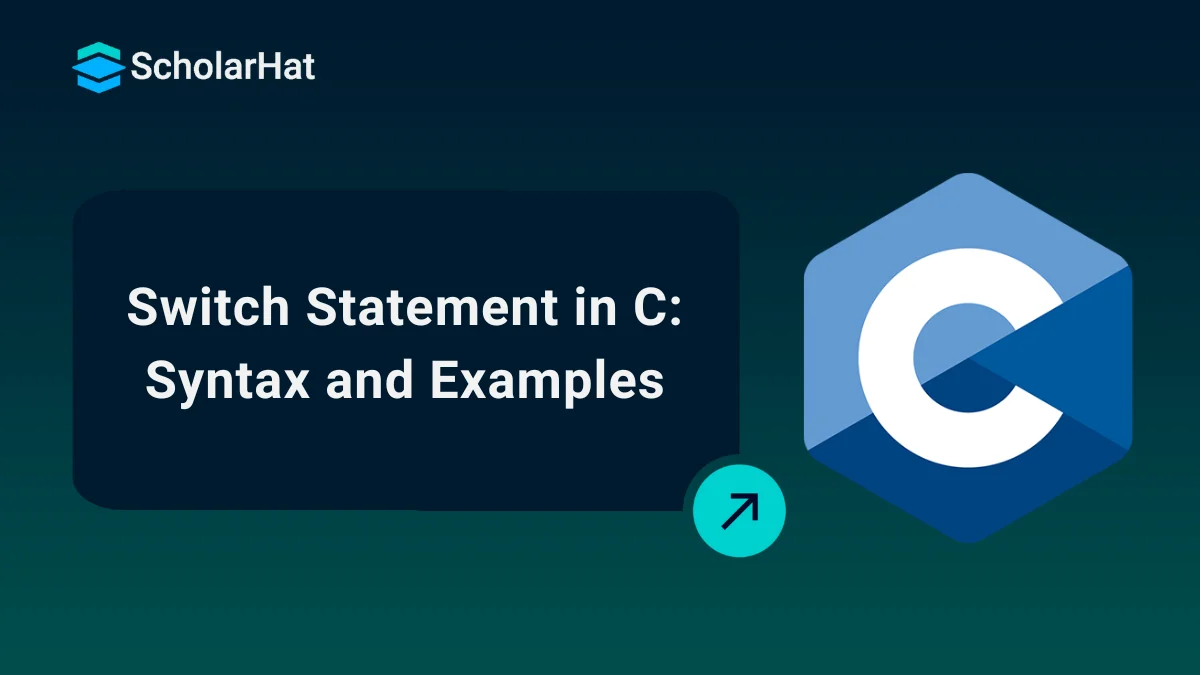26
DecSwitch Statement in C: Syntax and Examples
Switch Statement in C
The switch statement is one of the most basic decision-making concepts in the C programming language. Switch statement is a control flow component that facilitates multi-way branching according to an expression's value. In C, the switch statement is composed of the switch keyword, an expression enclosed in parenthesis, and several case labels that specify potential values. C++ (CPP) also makes use of this statement for comparable reasons. You can study examples showing how switch statements are used in real-world C applications to gain a better understanding.
In this C tutorial, we'll explore what makes switch statements so versatile and practical, from how they're set up to how they can be used effectively. To gain a deeper understanding and enhance your programming skills, be sure to enroll in our C programming language online course free and take your learning to the next level.
What is the Switch Statement in C?
In the previous conditional statements tutorial we saw the if else-if ladder to check multiple conditions if one or the other fails. The switch statement serves as an alternative to the if else-if ladder. It checks multiple cases for different values of a single variable.

Syntax
switch(expression){
case value1:
//code to be executed;
break; //optional
case value2:
//code to be executed;
break; //optional
......
default:
code to be executed if all cases are not matched;
}
The working of the switch the statement goes like this
- It starts with the keyword
switch, followed by a set of()containing anexpression. - The expression is evaluated once and compared with the values of each
case. - If any
casematches, the correspondingcasestatement executes. - After the execution of the matching
casestatement, the control comes out of theswitchstatement due to thebreakkeyword. - If no
casematches, thedefaultstatement, if present, gets executed.
Read More - Top 50 Mostly Asked C Interview Questions and Answers
Rules for the switch statement in C
- The
data typeof theswitch expressionmust be of anintegerorcharacter. - All the
case labelsmust be followed by a colon “:”. - The
casethe value must be anintegerorcharacterconstant. - The
breakkeyword is optional, but it can decrease the execution time of your program. It will stop the unnecessary execution of other cases after a match is found.
Note: We will learn break statement in detail in the section, Break and Continue Statements in C
Example
#include <stdio.h>
int main(){
int number=100;
switch(number){
case 10:
printf("number is equals to 10");
break;
case 50:
printf("number is equal to 50");
break;
case 100:
printf("number is equal to 100");
break;
default:
printf("number is not equal to 10, 50 or 100");
}
return 0;
}
The above code in the C Compiler checks if thenumber is 10 or is it 50 or is it 100. If none of the given numbers exist, the default the statement gets printed.
Output
number is equal to 100
Nested Switch Case in C
There can be several switch statements inside a switch statement. These are called nested switch statements.
Syntax
switch (expression1)
{
case value1:
// Code block for value1
switch (expression2)
{
case valueA:
// Code block for valueA
break;
case valueB:
// Code block for valueB
break;
// More cases for expression2
}
break;
case value2:
// Code block for value2
break;
// More cases for expression1
default:
// Default code block for expression1
}
Example
#include <stdio.h>
int main () {
int i = 10;
int j = 20;
switch(i) {
case 10:
printf("the value of i evaluated in outer switch: %d\n",i);
case 20:
switch(j) {
case 20:
printf("The value of j evaluated in nested switch: %d\n",j);
}
}
printf("Exact value of i is : %d\n", i );
printf("Exact value of j is : %d\n", j );
return 0;
} - In the above code, the outer
switchstatement checks the value ofi. - The value of
imatches with thecase 10. So, the corresponding statement gets printed. - Since there's no
breakstatement, it continues to execute the code in the subsequentcase 20block. - Inside the
case 20block, there is anested switchstatement that checks the value ofj. - The value of
jmatches withcase 20in thenested switchblock. So, the corresponding statement gets printed.
Output
the value of i evaluated in the outer switch: 10
The value of j evaluated in nested switch: 20
Exact value of i is : 10
Exact value of j is : 20Summary
In conclusion, switch statements in C provide a useful alternative to the traditional “if” statement for making decisions within your code. Not only are they more efficient and precise, but they also provide many advantages. As you continue learning about the intricacies of switch statements in C, remember the tremendous power it gives you not only to control what is inside your program’s box of instructions but also how best to apply those instructions for maximum results. C Online Course Certification will help you more in your understanding of switch statements and other essential concepts.










